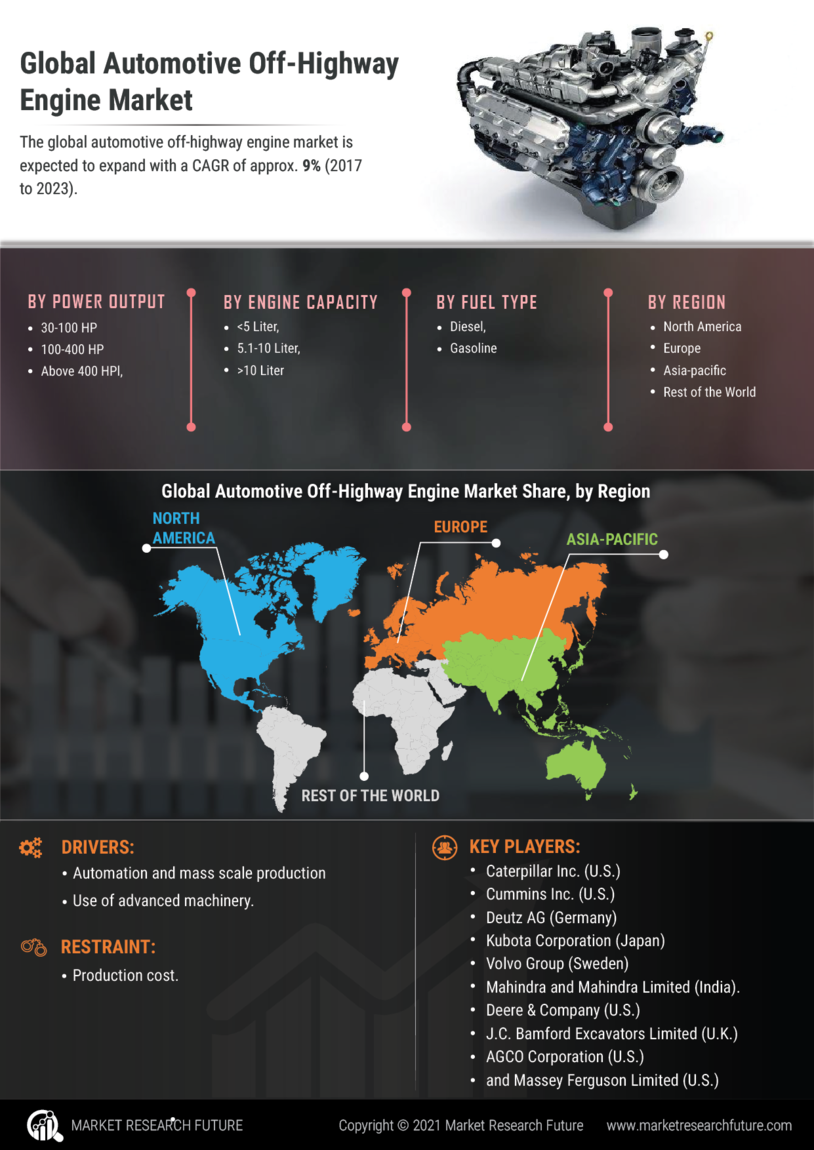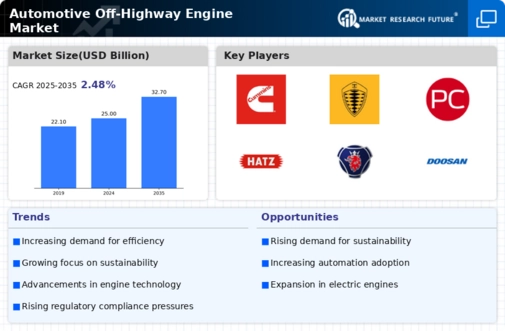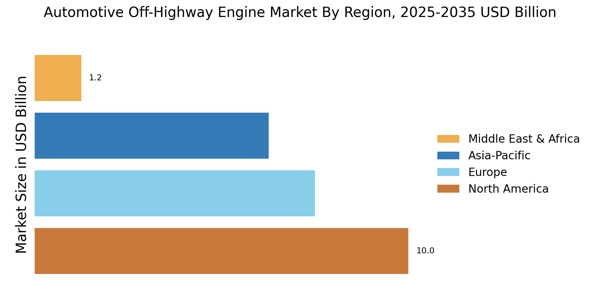Expansion of Mining Activities
The Automotive Off-Highway Engine Market is significantly impacted by the expansion of mining activities across various regions. As the demand for minerals and resources continues to rise, mining companies are investing in advanced machinery that requires high-performance off-highway engines. In 2025, the mining sector is anticipated to account for a considerable share of the market, with growth projections indicating an increase of approximately 4% annually. This expansion is likely to drive manufacturers to enhance engine durability and efficiency to meet the rigorous demands of mining operations. Consequently, the growth of mining activities is expected to be a key driver for the Automotive Off-Highway Engine Market.
Growth in Agricultural Mechanization
The Automotive Off-Highway Engine Market is witnessing substantial growth due to the increasing mechanization of agriculture. As farmers seek to enhance productivity and efficiency, the demand for advanced agricultural machinery equipped with powerful off-highway engines is on the rise. In 2025, the agricultural sector is projected to contribute significantly to the overall market, with an expected growth rate of around 6% annually. This trend is likely to encourage manufacturers to develop specialized engines tailored for agricultural applications, thereby expanding their product offerings. The emphasis on mechanization in agriculture is expected to drive innovation and investment in the Automotive Off-Highway Engine Market.
Rising Focus on Emission Regulations
The Automotive Off-Highway Engine Market is increasingly influenced by stringent emission regulations imposed by various authorities. As environmental concerns gain prominence, regulatory bodies are enforcing stricter standards for off-highway engines to reduce harmful emissions. In 2025, it is expected that compliance with these regulations will become a critical factor for manufacturers. This shift may lead to the adoption of cleaner technologies, such as selective catalytic reduction (SCR) and exhaust gas recirculation (EGR), which are designed to minimize nitrogen oxide (NOx) emissions. Consequently, manufacturers that prioritize compliance and invest in cleaner technologies are likely to gain a competitive edge in the Automotive Off-Highway Engine Market.
Technological Advancements in Engine Design
Technological advancements are playing a crucial role in shaping the Automotive Off-Highway Engine Market. Innovations in engine design, such as the development of more efficient combustion processes and lightweight materials, are enhancing engine performance and fuel efficiency. In 2025, it is anticipated that engines with improved thermal efficiency will dominate the market, potentially leading to a reduction in fuel consumption by up to 15%. Furthermore, the integration of advanced control systems and sensors is enabling better monitoring and management of engine operations, which could result in lower emissions and compliance with stringent environmental regulations. These advancements are likely to attract investment and drive growth within the Automotive Off-Highway Engine Market.
Increasing Demand for Construction Equipment
The Automotive Off-Highway Engine Market is experiencing a notable surge in demand for construction equipment. This trend is primarily driven by the ongoing infrastructure development projects across various regions. As governments invest heavily in building roads, bridges, and other essential facilities, the need for robust off-highway engines becomes paramount. In 2025, the construction sector is projected to account for a significant share of the off-highway engine market, with estimates suggesting a growth rate of approximately 5% annually. This increasing demand is likely to propel manufacturers to innovate and enhance engine performance, thereby contributing to the overall growth of the Automotive Off-Highway Engine Market.


















Leave a Comment